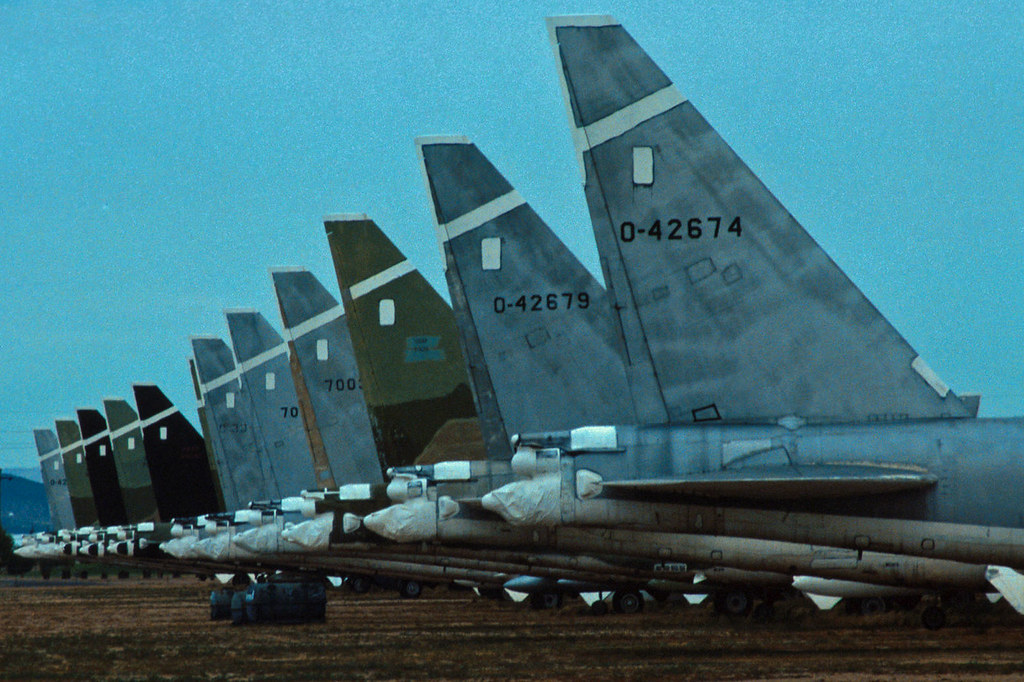
The B-52 Stratofortress, an aerospace behemoth that has served as a backbone of American air power for over seven decades, continues to assert its dominance in the sky as a pivotal asset to U.S. military might. Though the first B-52 took to the skies in 1952, this strategic bomber has been ingeniously updated to remain a formidable force in modern warfare.

The Stratofortress is a testament to military ingenuity, seamlessly transitioning from its Cold War-era nuclear deterrence role to a multi-mission platform capable of executing strategic attacks, air interdiction, and maritime operations. A fleet of 55 active and 15 reserve B-52s, as reported, serves as a reminder of the bomber’s unwavering relevance.

Despite its vintage, the B-52 has undergone significant modernization. It has embraced cutting-edge weaponry, from precision-guided munitions to hypersonic missiles.

This arsenal, coupled with its extensive range—unrefueled at close to 9,000 miles—and ability to stay over a target for hours, equips the B-52 for contemporary conflicts anywhere on the globe.

Modernization efforts are pushing the B-52’s service life well into the 2050s. A Rolls Royce contract worth $2.6 billion aims to replace the bomber’s vintage engines with advanced F130 engines. Such upgrades aim to bolster the B-52’s efficiency and enhance its survivability in high-threat environments, like those posed by near-peer adversaries.

Parallel to the Stratofortress’s upgrades is the development of the B-21 Raider, a fifth-generation stealth aircraft expected to complement the B-52. This dual-fleet strategy will enable the U.S. to maintain air dominance across a spectrum of adversaries and scenarios.

The ageless nature of the Stratofortress is not without precedence. The oldest B-52 still in service is likely the “Memphis Belle IV,” a B-52H variant. Its ability to remain combat-ready is due to extensive overhauls, which include refitting every four years.

Colonel Robert Durkin highlighted the extent of these modifications, remarking, “I would be surprised if there’s an original rivet in any of those airplanes we have out on the ramp.”

As the B-52 stands as a time-honored titan of the skies, it’s also being positioned as an arsenal plane—a “very large airborne magazine,” as coined by Secretary of Defense Ashton Carter in 2016.

This role would enable it to carry a plethora of weapons, networked to fifth-generation aircraft, and effectively serve as a battlefield node, elevating its capabilities to a grand scale.

The B-52’s capability to launch a diverse array of air and spacecraft, such as the X-15 hypersonic test aircraft, underscores its adaptability.

Furthermore, its spacious bomb bay and external pylons could facilitate the carriage of an even wider array of munitions, thereby transforming it into a flying armory—a concept that’s not far-fetched but rooted in its existing capabilities.

The Stratofortress’s adaptability also extends to its role as a communications hub in combat, featuring technology like the Combat Network Communications Technology (CONECT) and Link 16. These systems position the B-52 as an information node, critical for the coordination and execution of complex operations.

All these advancements set the B-52 on a course to potentially see a century of service—a remarkable feat for an aircraft that has already transcended generations.

As the U.S. Air Force eyes an operational future for the Stratofortress alongside next-gen aircraft like the B-21, the B-52’s evolution from a traditional bomber to a state-of-the-art arsenal plane demonstrates its enduring significance in strategic military operations.
